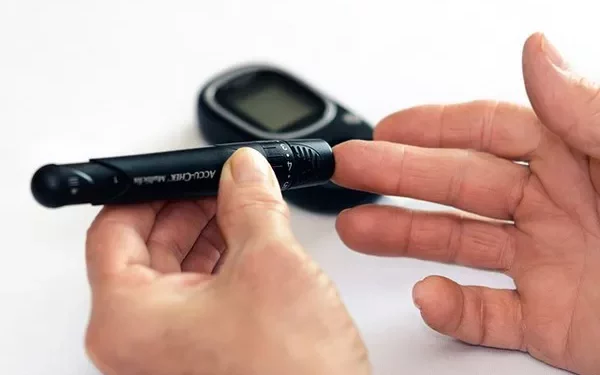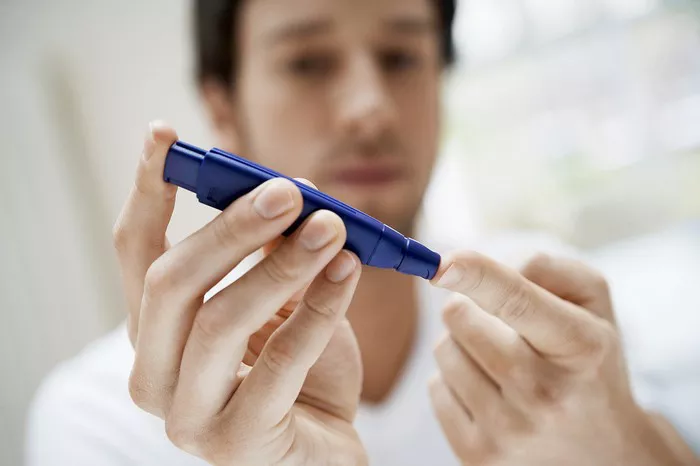Blood glucose monitoring is a crucial aspect of diabetes management, enabling individuals with diabetes to keep track of their blood sugar levels and make informed decisions about their diet, exercise, and medication. Traditionally, blood glucose monitoring has involved finger pricking to obtain a blood sample, which is then analyzed using a glucometer. However, the discomfort and inconvenience associated with frequent finger pricks have led to the development of alternative methods. One of the most promising advancements in this area is the bloodless glucose monitor. This article explores the current state of bloodless glucose monitoring technology, its benefits, challenges, and future prospects.
Understanding Bloodless Glucose Monitoring
Bloodless glucose monitoring refers to methods of measuring blood glucose levels without the need for a blood sample. These technologies aim to provide a painless, convenient, and continuous way to monitor glucose levels, improving the quality of life for individuals with diabetes. Several approaches are being explored, including optical methods, transdermal sensors, and breath analysis.
Optical Methods
Optical methods for glucose monitoring involve the use of light to measure glucose levels. These methods typically rely on the absorption, reflection, or scattering of light by glucose molecules in the body. Some of the prominent optical techniques include:
- Near-Infrared (NIR) Spectroscopy: NIR spectroscopy uses near-infrared light to measure glucose levels. When NIR light is directed at the skin, glucose molecules absorb specific wavelengths of light. By analyzing the absorption spectrum, the concentration of glucose can be estimated. NIR spectroscopy has shown promise in providing non-invasive glucose measurements, but its accuracy can be affected by factors such as skin thickness, hydration, and ambient light.
- Mid-Infrared (MIR) Spectroscopy: MIR spectroscopy operates on a similar principle to NIR spectroscopy but uses mid-infrared light. MIR light provides more specific absorption characteristics for glucose, potentially improving accuracy. However, the penetration depth of MIR light is lower than that of NIR light, which can limit its effectiveness for non-invasive monitoring.
- Optical Coherence Tomography (OCT): OCT is a non-invasive imaging technique that uses light waves to capture detailed cross-sectional images of tissues. In glucose monitoring, OCT can be used to measure changes in the optical properties of skin and other tissues related to glucose levels. While OCT shows promise, its application in continuous glucose monitoring is still in the experimental stage.
Transdermal Sensors
Transdermal sensors involve the use of microneedles or other techniques to extract glucose from interstitial fluid (the fluid between cells) rather than blood. These sensors offer a minimally invasive alternative to traditional blood sampling methods. Key types of transdermal sensors include:
- Microneedle Arrays: Microneedles are tiny, minimally invasive needles that penetrate the skin’s outer layer without causing significant pain. These microneedles can be coated with glucose-sensitive materials or connected to sensors that measure glucose levels in the interstitial fluid. Microneedle arrays have shown promise in providing accurate glucose readings and are being developed for use in wearable devices.
- Electrochemical Sensors: Electrochemical sensors use electrodes to detect glucose levels in interstitial fluid. These sensors can be integrated into wearable devices, such as patches or smartwatches, providing continuous glucose monitoring. Advances in materials science and nanotechnology have improved the sensitivity and accuracy of electrochemical sensors, making them a viable option for bloodless glucose monitoring.
Breath Analysis
Breath analysis is an emerging method for non-invasive glucose monitoring that involves measuring volatile organic compounds (VOCs) in exhaled breath. Glucose metabolism produces specific VOCs that can be detected and correlated with blood glucose levels. Some of the techniques used in breath analysis include:
- Gas Chromatography-Mass Spectrometry (GC-MS): GC-MS is a highly sensitive analytical technique that separates and identifies individual compounds in a sample. In glucose monitoring, GC-MS can be used to detect VOCs in breath that are indicative of glucose levels. While GC-MS provides accurate measurements, its complexity and cost limit its use in routine monitoring.
- Chemical Sensors: Chemical sensors are designed to detect specific VOCs associated with glucose metabolism. These sensors can be integrated into portable devices, offering a convenient and non-invasive way to monitor glucose levels. Research is ongoing to improve the sensitivity, selectivity, and stability of chemical sensors for glucose monitoring.
Benefits of Bloodless Glucose Monitoring
Bloodless glucose monitoring offers several benefits over traditional methods, making it an attractive option for individuals with diabetes. Some of the key advantages include:
Pain-Free Monitoring
One of the most significant benefits of bloodless glucose monitoring is the elimination of pain associated with finger pricks. Traditional blood glucose monitoring requires frequent finger pricks to obtain blood samples, which can be painful and cause discomfort. Bloodless methods, such as optical and transdermal sensors, offer a pain-free alternative, improving the overall experience for users.
Continuous Monitoring
Many bloodless glucose monitoring technologies are designed for continuous monitoring, providing real-time data on glucose levels throughout the day and night. Continuous glucose monitoring (CGM) systems can help individuals with diabetes better understand how their glucose levels fluctuate in response to various factors, such as meals, exercise, and medication. This continuous data can lead to more informed decisions and improved diabetes management.
Improved Compliance
The convenience and comfort of bloodless glucose monitoring can lead to improved compliance with glucose monitoring regimens. Individuals with diabetes may be more likely to monitor their glucose levels regularly if the process is painless and hassle-free. Improved compliance can result in better glucose control and reduced risk of complications.
Reduced Risk of Infection
Finger pricks carry a risk of infection, especially if proper hygiene practices are not followed. Bloodless glucose monitoring eliminates the need for blood sampling, reducing the risk of infection and making it a safer option for individuals with diabetes.
Enhanced Quality of Life
The pain, inconvenience, and anxiety associated with traditional glucose monitoring can negatively impact the quality of life for individuals with diabetes. Bloodless glucose monitoring offers a more comfortable and convenient way to manage diabetes, enhancing the overall quality of life and reducing the burden of diabetes management.
Challenges and Limitations
While bloodless glucose monitoring holds great promise, there are several challenges and limitations that need to be addressed before these technologies can become widely adopted. Some of the key challenges include:
Accuracy and Reliability
The accuracy and reliability of bloodless glucose monitoring methods are critical factors that determine their effectiveness in diabetes management. Variability in measurements due to factors such as skin type, hydration, temperature, and interference from other substances can affect the accuracy of non-invasive methods. Ensuring consistent and reliable measurements across diverse populations is a significant challenge that researchers and developers are working to overcome.
Calibration Requirements
Many bloodless glucose monitoring systems require periodic calibration using traditional blood glucose measurements to ensure accuracy. Calibration can be inconvenient and may diminish some of the benefits of non-invasive monitoring. Developing calibration-free systems or reducing the frequency of calibration is an ongoing area of research.
Cost and Accessibility
The development and commercialization of bloodless glucose monitoring technologies can be expensive, potentially limiting their accessibility to individuals with diabetes. Ensuring that these technologies are affordable and widely available is essential to maximize their impact on diabetes management. Efforts to reduce production costs and increase economies of scale will be important in making bloodless glucose monitoring accessible to all.
Regulatory Approval
Bloodless glucose monitoring devices must undergo rigorous testing and receive regulatory approval before they can be marketed and used by individuals with diabetes. The approval process can be lengthy and challenging, requiring comprehensive clinical trials to demonstrate safety and efficacy. Ensuring that these devices meet regulatory standards is crucial for their acceptance and adoption.
User Education and Training
Effective use of bloodless glucose monitoring devices requires proper education and training for users. Individuals with diabetes need to understand how to use the devices correctly, interpret the data, and make informed decisions based on the readings. Providing adequate education and support is essential to ensure that users can maximize the benefits of these technologies.
Future Prospects
Despite the challenges, the future of bloodless glucose monitoring looks promising, with ongoing advancements in technology, materials science, and medical research. Several trends and developments are shaping the future of this field:
Integration with Wearable Technology
The integration of bloodless glucose monitoring with wearable technology, such as smartwatches and fitness trackers, is a significant trend. Wearable devices equipped with glucose sensors can provide continuous monitoring, data tracking, and real-time alerts, making diabetes management more seamless and integrated into daily life. Companies like Apple, Google, and Fitbit are actively exploring and developing wearable glucose monitoring solutions.
Advances in Sensor Technology
Advances in sensor technology, including nanotechnology, flexible electronics, and biocompatible materials, are enhancing the sensitivity, accuracy, and comfort of bloodless glucose monitoring devices. These innovations are paving the way for smaller, more discreet, and more reliable sensors that can be worn comfortably for extended periods.
Artificial Intelligence and Data Analytics
Artificial intelligence (AI) and data analytics are playing an increasingly important role in bloodless glucose monitoring. AI algorithms can analyze continuous glucose data, identify patterns, and provide personalized insights and recommendations. Machine learning models can also improve the accuracy and predictive capabilities of glucose monitoring systems, helping users make proactive decisions to manage their diabetes.
Integration with Diabetes Management Platforms
Integration with comprehensive diabetes management platforms that include insulin delivery systems, diet tracking, and exercise monitoring is another important trend. Bloodless glucose monitoring devices can provide valuable data that can be seamlessly integrated into these platforms, offering a holistic approach to diabetes management. This integration can lead to more personalized and effective treatment plans.
Regulatory Advancements
Regulatory agencies are increasingly recognizing the importance of non-invasive glucose monitoring technologies and are working to establish clear guidelines and pathways for approval. Collaboration between industry stakeholders, researchers, and regulatory bodies is essential to expedite the development and approval of safe and effective bloodless glucose monitoring devices.
Patient-Centered Design
Future bloodless glucose monitoring devices are likely to prioritize patient-centered design, focusing on user comfort, ease of use, and seamless integration into daily routines. Designing devices that are intuitive, non-intrusive, and aesthetically pleasing can enhance user acceptance and compliance.
See also: How Do Bloodless Glucose Meters Work?
Conclusion
Bloodless glucose monitoring represents a significant advancement in diabetes management, offering a painless, convenient, and continuous way to monitor blood glucose levels. While there are challenges to overcome, including accuracy, calibration, cost, and regulatory approval, ongoing research and technological innovations are paving the way for the widespread adoption of these devices. The integration of bloodless glucose monitoring with wearable technology, AI, and comprehensive diabetes management platforms holds great promise for improving the quality of life and health outcomes for individuals with diabetes. As these technologies continue to evolve, they have the potential to revolutionize diabetes care and empower individuals to take control of their health in a more comfortable and effective manner.
Related topics:
What’s the Best CGMs for Type 2 Diabetes


























